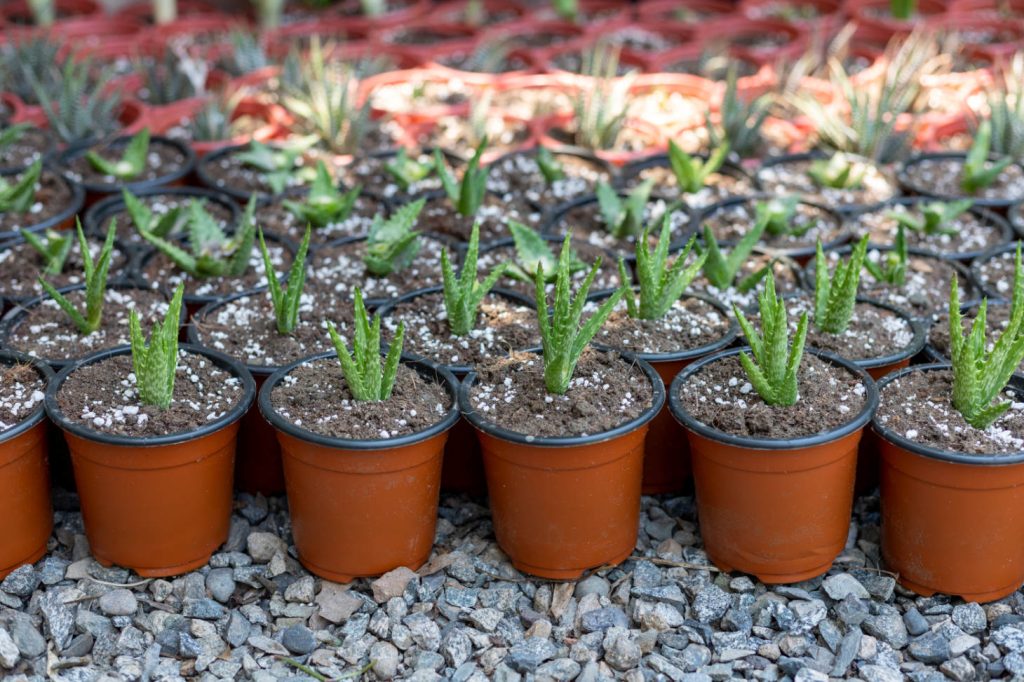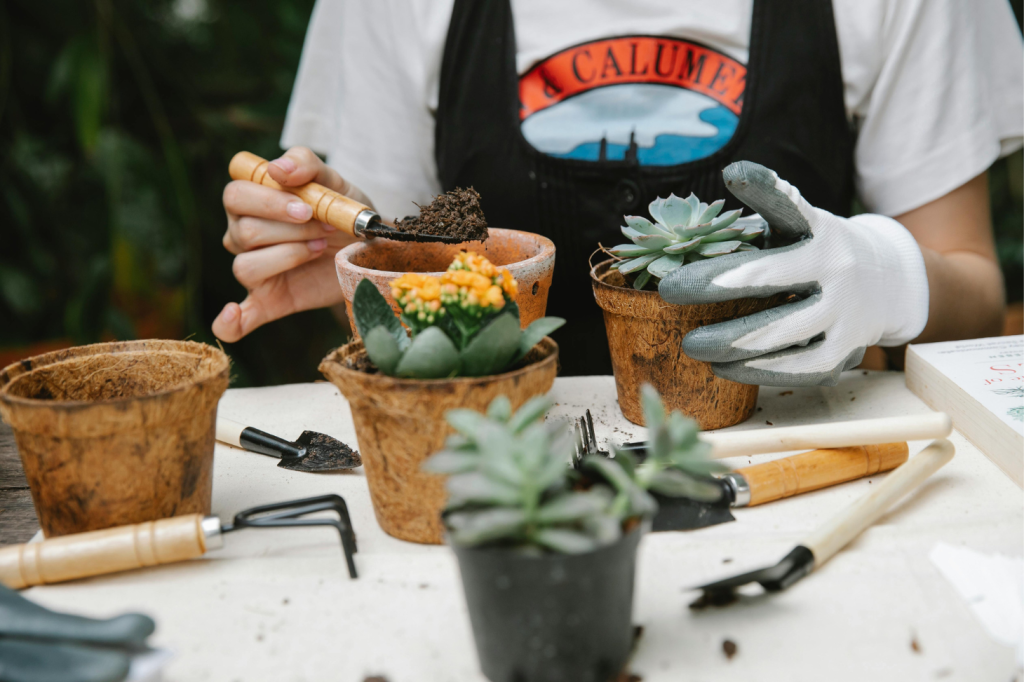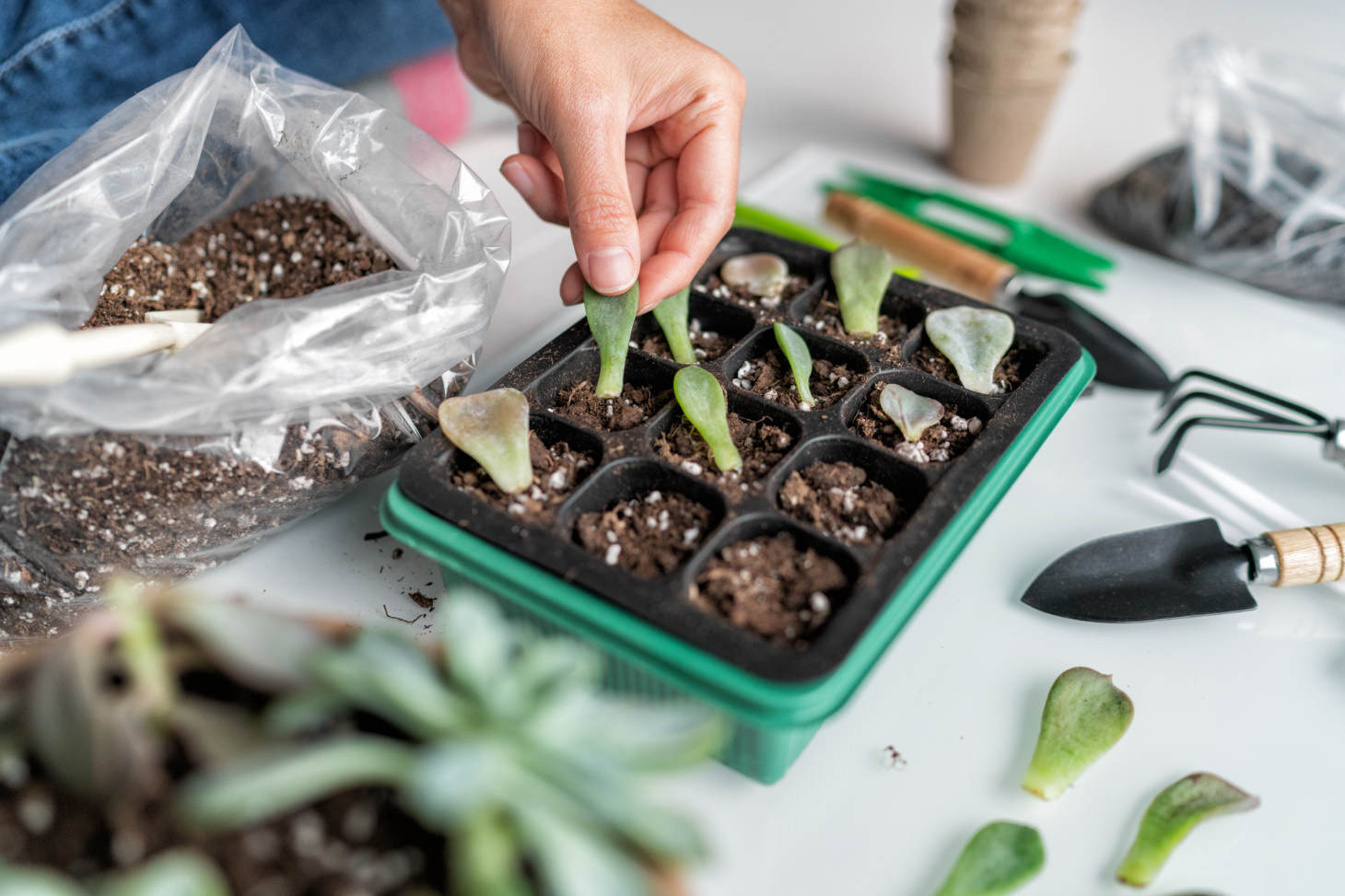Succulent Propagation Methods
Succulent propagation is a simple way to multiply your favorite plants without spending a lot of money. You can grow new succulents from seeds, leaves, cuttings, or even tiny offshoots called pups. Each method has its own steps and can work for a wide variety of succulent types.
With the right approach, almost anyone can successfully propagate succulents at home. A few basic tips and a little patience can help you build your own collection, whether you’re a beginner or more experienced.

Key Takeaways
- Succulents can be easily multiplied by leaves, cuttings, or pups.
- Proper care and simple steps can lead to healthy new plants.
- Propagation works well for beginners and experienced gardeners.
Popular Propagation Techniques
You can propagate succulents using several reliable methods. Direct cuttings, separating offsets, and removing leaves from the main plant are among the most effective ways to grow new plants at home.
Leaf Cuttings and Leaf Propagation
Leaf cuttings are a popular way to propagate succulents like Echeveria, Graptopetalum, and Sedum. To start, gently twist a healthy leaf from the main plant. Make sure the entire leaf comes off, as damaged or torn leaves are less likely to root.
Lay the succulent leaf on top of slightly damp, well-draining soil. Do not water right away. It’s important to let the cut end of the leaf callus over for several days before misting lightly. In a few weeks, roots and small rosettes will begin to form at the base of the leaf.
Not all succulent types will root this way, so it’s helpful to start with the species known for leaf propagation. Avoid overwatering, which can cause rot. When the new plantlets are large enough, you can transplant them into individual pots.
Stem Cuttings and Nodes
Stem cuttings are effective for succulents with longer stems, like Jade Plants, Aeoniums, and Kalanchoe. Use clean, sharp scissors or a knife to cut a healthy stem just below a node (the place where leaves attach). Remove a few of the lower leaves to expose the node.
Allow the stem cutting to sit out for a few days until the cut end is dry and callused to reduce the risk of rotting. Place the cutting upright in well-draining soil. Mist the soil lightly rather than soak it.
It can take 2-4 weeks for roots to develop. Some succulents root better with a bit of humidity, so consider covering with a clear container to keep moisture in. When roots appear, water sparingly and gradually increase sunlight.
Offsets and Pups
Many succulents, such as Aloe, Haworthia, and Sempervivum, produce offsets, small new plants, also known as pups. Offsets usually grow at the base of the parent plant. Wait until the pups are about one-third the size of the adult.
Gently remove the soil around the pup and pull or cut it away from the parent, ensuring roots remain attached if possible. Let the cut or broken ends dry and callus for a day or two.
Plant offsets in fresh, well-draining soil. Water only after a few days to avoid rot. Offsets often establish themselves quickly compared to leaf or stem cuttings, making this method fast and reliable for propagating succulents.
Advanced and Less Common Succulent Propagation Methods
Besides common methods like leaf or stem cuttings, there are techniques that can help you grow rare or unique succulents. Each approach has unique steps, equipment, and care tips. Using these methods can expand your collection and improve your propagation skills.
Seed Propagation and Germination
Seed propagation is less common but lets you grow large numbers of new plants. This method is especially useful for rarer species or if you want to experiment with genetic diversity.
Begin by collecting mature seed pods from a healthy succulent or buy succulent seeds from a trusted source. Use a shallow tray filled with a gritty, well-draining mix. Sprinkle seeds evenly on the surface and avoid covering them deeply, many species need light for germination.
Mist the soil to keep it evenly moist (not soaked). Cover the tray with a clear lid or plastic wrap to hold in humidity. Place it in a warm spot with bright, indirect light. Germination can take anywhere from a few days to several weeks, depending on the species. Once sprouts appear, uncover the tray and gradually adjust them to drier air and more light.
Propagation from Flower Stalks
Some succulents, like Echeveria or Graptopetalum, can be propagated from their flower stalks. This method is less reliable but can produce unique results.
After the plant blooms, cut off the flower stalk near the base and let it dry for a day. Place the stalk on top of well-draining soil, making sure that nodes or small buds are touching the surface.
Keep the soil lightly moist. In a few weeks, new baby plants (plantlets) may start to grow from the stalk’s nodes. Once plantlets develop roots and leaves, gently remove them and repot into individual containers.
This technique does not work for all succulents but can be rewarding for those that do respond, giving you a chance to grow plants genetically similar to the parent.
Frequently Asked Questions

There are a few important things you should know about propagating succulents. Factors like the propagation method, time frame for rooting, watering needs, and growing conditions can affect your results.
What steps are essential for propagating succulent leaves in soil?
Start by picking a healthy leaf. Gently twist it off the stem, making sure the base of the leaf is undamaged.
Let the leaf dry for a few days until the end calluses over. Place the leaf on top of dry, well-draining soil without burying it. Keep the soil slightly damp by misting when it dries out, and give the leaf bright, indirect sunlight.
How long does it take for succulent leaves to root and grow when propagated in water?
It usually takes one week to several weeks for roots to show when propagating in water, depending on the species of the plant. Leaf cuttings will first form roots, and sometimes small new leaves after a month.
Not all succulent leaves will root in water, and you should change the water every few days to keep it clean.
Can you propagate succulents using a stem? If so, what is the process?
Yes, you can propagate succulents from a stem. Use a sharp, clean knife to cut a piece of healthy stem.
Let the stem cutting dry for a few days until the cut end is callused. Place the cutting in well-draining soil and wait a week before lightly watering. New roots will start forming within two to four weeks.
What is the success rate of propagating succulents from cuttings?
The success rate is generally high. Most stem and leaf cuttings root and grow well if you provide the right care.
Healthy leaves and stems, dry cut ends, and proper watering all make a big difference. Some species root more easily than others.
How often should you water succulents during propagation?
Mist the soil when it feels completely dry. Avoid soaking the soil; too much water can cause the cuttings to rot.
During the first few weeks, you might mist every few days. As roots develop, slowly cut back on watering.
Are there specific conditions that favor the propagation of succulents from leaves?
Warm temperatures, good air flow, and indirect sunlight help new succulents form. Use a well-draining soil mix to avoid rot.
Keep the leaves out of direct hot sun, which can dry them out. A spot with filtered light gives the best results for rooting and growth.

